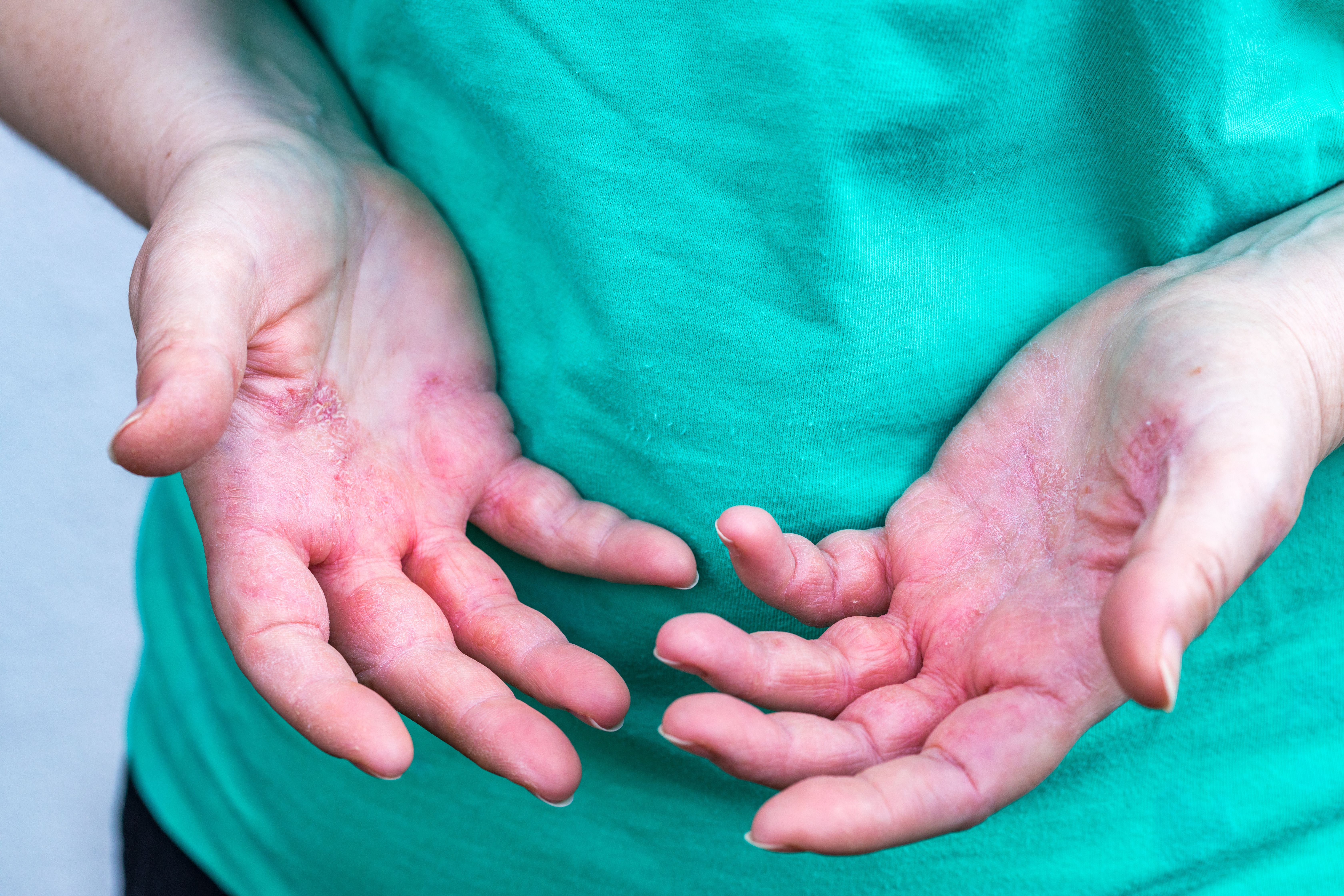- Case-Based Roundtable
- General Dermatology
- Eczema
- Chronic Hand Eczema
- Alopecia
- Aesthetics
- Vitiligo
- COVID-19
- Actinic Keratosis
- Precision Medicine and Biologics
- Rare Disease
- Wound Care
- Rosacea
- Psoriasis
- Psoriatic Arthritis
- Atopic Dermatitis
- Melasma
- NP and PA
- Skin Cancer
- Hidradenitis Suppurativa
- Drug Watch
- Pigmentary Disorders
- Acne
- Pediatric Dermatology
- Practice Management
- Prurigo Nodularis
- Buy-and-Bill
News
Article
Caregivers and Patients With Atopic Dermatitis Prioritize Symptom Control, Adverse Effect Management
Author(s):
A study explored the prioritization habits of both patients with atopic dermatitis and their caregivers when it comes to treatment.
Adults, adolescents, and caregivers affected by atopic dermatitis (AD) consistently placed the highest value on rapid symptom control and minimizing adverse effects when asked about treatment preferences, according to a study published in the Journal of Dermatological Treatment.
The researchers explained that topical treatments for mild to moderate AD, including emollients, Janus kinase (JAK) inhibitors, and corticosteroids, differ in clinical and nonclinical attributes. They noted that nonclinical outcomes often cannot be captured by traditional trials or analyses. In particular, understanding patients’ preferences can help to inform shared decision-making for physicians and provide crucial insight for regulatory and payer discussions.
Although previous preference research suggests that safety, efficacy, and mode of administration are all important treatment considerations, the researchers explained that topical treatment preferences for adults, adolescents, and caregivers affected by AD have not yet been well characterized. Consequently, the study aimed to quantify the relative importance of AD treatment attributes among affected adolescents, adults, and caregivers.
The researchers conducted their study using a discrete-choice experiment (DCE) survey instrument. They developed the survey using a previously conducted study that involved in-depth, one-on-one qualitative research interviews, so the final set of attributes reflected the priorities of those with AD and caregivers.
The survey was administered to US adults with AD aged 18 years or older, adolescents with AD aged 12 to 17 years, and caregivers of children with AD between the ages of 3 months and 11 years to elicit treatment attribute preferences. A total of 300 adults, 331 adolescents, and 300 caregivers completed the survey.
Of the adult cohort, 69% were female, and the mean age was 53 years. Most adult respondents self-identified as White (90%), about 7% self-identified as Black, and 4% self-identified as Hispanic or Latino. Also, 48% of the adolescent cohort were female, and the mean age was 15 years. Similar to the adult cohort, 78% of adolescents self-identified as White, approximately 13% self-identified as Black, and 10% self-identified as Hispanic or Latino. Lastly, 74% of the caregivers were female, and the mean age was 36 years. Like the other cohorts, 72% self-identified as White, approximately 18% self-identified as Black, and 11% self-identified as Hispanic or Latino.
When taking the survey, participants were presented with a series of questions involving hypothetical treatment profiles that were characterized by varying efficacy, adverse events, vehicle, and application frequency. The experimental design included 72 treatment pairs across 6 blocks of 12 questions, which were randomly assigned to respondents to avoid ordering effects. The researchers analyzed the survey’s data using a random-parameters logit model to calculate the conditional relative importance (CRI) of each attribute, which was the difference between the preference weight for the most-preferred and least-preferred level.
From the survey, the researchers determined that avoiding skin color changes (CRI, 29.0) and time until itch improvement (26.6) were most important to adults. Conversely, adolescents were less concerned with avoiding a change in skin color (CRI, 19.1) than adult patients or caregivers (27.1). Additionally, caregivers (CRI, 14.2) were less concerned about time to clear or almost clear skin than both adult (17.8) and adolescent (25.9) patients. On the other hand, caregivers (CRI, 18.9) were more concerned with application site pain than adults (7.9) and adolescents (15.0). Overall, application frequency was not identified as the most important treatment attribute for any of the cohorts.
The researchers acknowledged their study’s limitations, one being that diversity among the study population was limited as most respondents identified as White, and most adults and caregivers had above a high school–level education. Consequently, the study population may not be representative of the broader US population with AD. Also, their findings are conditional on the range of attributes and levels evaluated as the respondents’ preferences may have differed had other attributes been included. Despite these limitations, the researchers made suggestions about future treatment and research based on their findings.
“Clinicians should have tools available to assess patient and caregiver preferences and should engage in detailed discussions of treatment options to ensure that patients are receiving treatments that align with their preferences and values,” the authors wrote. “…Further research exploring heterogeneity in preferences within patient and caregiver cohorts, as well as for different types and AD severities, may contribute to more personalized and effective AD management.”
Reference
Feldman SR, Thyssen JP, Boeri M, et al. Adult, adolescent, and caregiver preferences for attributes of topical treatments for mild-to-moderate atopic dermatitis: a discrete-choice experiment. J Dermatolog Treat. 2024;35(1):2304020. doi:10.1080/09546634.2024.2304020\
[This article was published by our sister publication, American Journal of Managed Care.]







